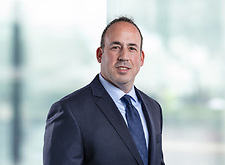FERC Orders Deal Blow to Downstate New York Renewables
On February 20, 2020, the Federal Energy Regulatory Commission (Commission) ruled on several petitions and complaints regarding the New York Independent System Operator’s (NYISO) wholesale market rules. [1] While the Commission’s rulings could have been worse for renewable energy developers for reasons discussed below, in large part, the Commission accepted the NYISO’s proposed rules and rejected arguments from state entities and clean energy advocates that the rules impose inappropriate barriers to entry for clean energy resources seeking to participate in the state’s wholesale capacity markets.
FERC’s acceptance of the NYISO’s market rules follows a similar decision issued by the Commission with respect to PJM in December 2019. These decisions effectively exclude clean energy resources that receive state subsidies, broadly defined by the Commission, from participating in the NYISO’s capacity market – an important source of revenue for renewable resources like wind and solar, and a potentially critical source of revenue for offshore wind and battery storage projects. The Commission’s decisions are at odds with the ambitious targets set forth in New York’s 2019 Climate Leadership and Community Protection Act (CLCPA).
Market participants should be particularly aware of changes to two important market rules: (1) buyer side mitigation (BSM) and (2) the interconnection of large generators.
I. Buyer Side Mitigation
The New York Independent System Operator operates the state’s wholesale energy and capacity markets. To prevent uneconomic behavior by resources seeking to manipulate prices in the wholesale market, the NYISO and other regional market operators instituted BSM rules. The BSM rules subject bids from certain supply resources in certain ISO load zones to a minimum offer price rule (MOPR), or a price floor. These rules are ostensibly aimed at preventing market manipulation through artificially low bids that set the market-clearing price.
The NYISO’s existing BSM rules require that new, non-exempt, installed capacity resources enter the NYISO’s mitigated capacity zones at a price at or above the offer floor and continue to offer those prices until their capacity clears 12 monthly auctions. These rules apply only in the mitigated capacity zones – NYISO load zones G, H, I, and J, which include Greene, Ulster, Dutchess, Orange, Putnam, Rockland, and Westchester counties; parts of Albany, Columbia, and Sullivan counties; and New York City. New capacity resources in these zones are exempt from BSM if their bids pass one of two narrow economic tests – the “Part A” or “Part B” test. A resource is exempt from BSM under Part A if its capacity price forecast for year 1 is higher than the default offer floor. A resource is exempt from BSM under Part B if the price forecast for the average of 3 years is higher than the net cost of new energy of the new resource.
The Commission’s February rulings apply the BSM rules to bids that are lower than they otherwise would have been because the resource receives “out-of-market” subsidies, which FERC now defines as including proceeds from renewable energy credits (REC) contracts and incentives from state-administered clean energy programs. This means that, in the Lower Hudson Valley and New York City, renewables that rely heavily on the state’s clean energy incentives will likely be mitigated, or precluded, from participating in the NYISO capacity market. This impact will be felt most by stand-alone energy storage resources who are primarily capacity providers. While this is a blow to developers seeking to bring resources online in the state’s mitigated load zones, the Commission might have – but did not, much to the relief of the renewable energy industry – institute such a MOPR policy in the rest of the state.
The Commission was presented with arguments for limited exemptions from the BSM rules for renewables, but declined to make an exception. Even the NYISO had a longstanding proposal to exempt the first 1000 MW of renewable resources in a Class Year from the BSM test. The New York State Energy Research and Development Authority (NYSERDA) and the Department of Public Service sought full exemptions for energy storage resources, for which capacity payments are critical to project viability, arguing that NYISO’s rules undermine the state’s policy in favor of renewables and battery storage resources. But the Commission rejected both requests, citing the supposed need to prevent renewables from “distorting” prices and threatening what the Commission considers to be the competitiveness of the NYISO’s capacity market. [2]
II. Large Generator Interconnection Tariff Changes
FERC also took up proposed changes to the NYISO’s Open Access Transmission Tariff, which contains rules for the interconnection of large generators – that is, generators with a capacity of more than 20 MW. The changes were intended to align the NYISO’s rules with FERC Order 845, which established streamlined procedures and pro forma contract terms for regional system operators, with a few modifications unique to the NYISO. The Commission accepted many of the NYISO’s tariff revisions, including its timeline for conducting interconnection studies. [3]
Projects enter the NYISO interconnection queue according to Class Year and are studied alongside resources in the same Class Year. This construct is unique to the NYISO and according to NYISO, warrants deviation from FERC’s pro forma rules and timelines for conducting interconnection studies. The pro forma rules require that system operators start interconnection studies as of the date of an executed study agreement between the system operator and transmission provider. The NYISO proposed a heightened threshold to kick off interconnection studies – interconnection feasibility studies would begin the later of (1) confirmation by the NYISO of receipt of deposit for conducting the study; (2) confirmation from the NYISO of receipt of required technical data; or (3) acceptance of the study scope by the connecting transmission owner.
Clean energy entities comprising the American Wind Energy Association, the Alliance for Clean Energy – New York (ACE NY), and the Solar Council opposed this heightened requirement. According to these groups, the interconnection study should begin when the resource has met all the requirements to move through the NYISO interconnection queue, not when the NYISO’s committees approve the study scope, which could cause additional delays in studying the interconnection requirements of the resource while the NYISO negotiates the scope of the studies. FERC approved the NYISO’s heightened requirements, but required that the NYISO provide more transparency around the models and assumptions it will use in those studies. The NYISO will provide more details on those processes in a compliance filing within 60 days of the Commission’s order.
III. What’s Next?
Clean energy advocacy groups intend to appeal the FERC decisions. The Alliance for Clean Energy – New York (ACE-NY), for example, expressed disappointment with the rulings, stating, “the FERC decisions create an unnecessary barrier to entry of new renewable energy resources that are essential to achieving New York State’s Climate Leadership and Community Protection Act standards to address climate change. The decisions result in many renewable resources not qualifying to receive capacity payments in the NYISO markets. This would make the financial viability of these resources more difficult.” [4] Moreover, the State and market participants will analyze the impacts of these rulings on the cost of NYSERDA’s “Index” REC programs for offshore wind and onshore large-scale renewables, where an inability to monetize capacity market revenue by generations with Index REC contracts may increase the cost of those contracts to ratepayers.
FERC is currently evaluating similar capacity market constructs in ISO-NE and PJM. Until the Commission issues market decisions, it has tolled rehearing requests. NYISO market participants should watch this space for FERC’s determination in those regional markets, which will likely indicate its stance on an appeal from clean energy advocacy groups. In the meantime, there is an ever-increasing need for New York State to evaluate the CLCPA’s renewable energy targets through the Public Service Commission’s resource adequacy proceeding already underway.[5]
If you received this alert from a third party or from visiting our website, and would like to be added to our Renewable Energy mailing list, or any other mailing list, please visit us at: https://forms.hodgsonruss.net/subscription-center-hr.html
[1] The Commission’s rulings were issued in four orders in Dockets Nos. EL13-62-001, EL13-62-002, EL19-86-000, EL16-92-001, ER17-996-000, and ER16-1404-000.
[2] See Order Denying Complaint, 170 FERC ¶ 61,119 (2020)
[3] See Order on Compliance, 170 FERC ¶ 61,117 (2020)
[4] Statement from Alliance for Clean Energy NY: FERC Decisions Negative for NY Clean Energy Resources, Feb. 20, 2020).
[5] See Case 19-E-0530.
Featured
- Partner
- Partner
- Partner
- Partner
- Partner
- Partner
- Partner
- Senior Associate
- Partner
- Co-Chair of the Firm, Partner
- Partner











